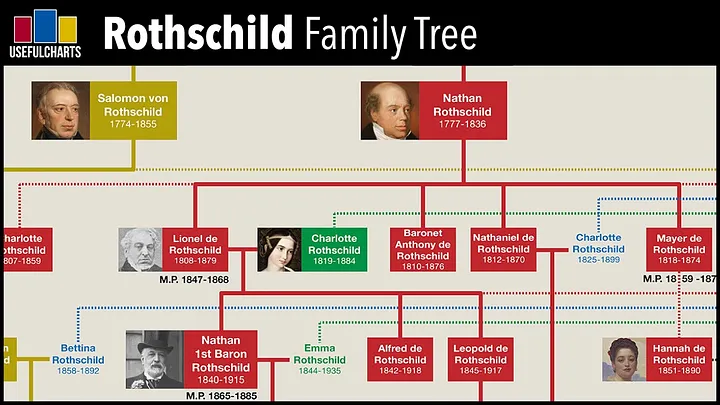The Rothschild family, a prominent European banking dynasty, has been the subject of numerous conspiracy theories for over two centuries. From claims of manipulating world events and controlling the global financial system, to allegations of being at the center of a secretive and powerful Jewish cabal, the Rothschilds have become synonymous with the concept of a powerful and secretive elite. However, despite the persistence of these theories, a closer examination of the available evidence reveals that the reality of the Rothschilds’ influence and power is far more complex and nuanced than the conspiracy theorists would have us believe.
The Rothschilds’ rise to prominence as European bankers can be traced back to the late 1700s, when Mayer Amschel Rothschild established a banking house in Frankfurt, Germany. Over the next few generations, the Rothschild family expanded their banking operations throughout Europe and eventually into the Americas and Asia. Their success was built on a combination of innovative business practices, a strong network of political and economic connections, and a reputation for confidentiality and trustworthiness.
It was this success, along with their Jewish heritage, that made the Rothschilds a target of anti-Semitic conspiracy theories. In the late 1800s and early 1900s, the Rothschilds were accused of using their financial power to manipulate world events and control the global financial system. These allegations were often linked to broader anti-Semitic conspiracy theories about a secretive and powerful Jewish cabal that was believed to be behind the major events of the world.
Despite the lack of concrete evidence to support these claims, the Rothschild conspiracy theory persisted and has continued to evolve over the years. In recent decades, the Rothschilds have been accused of everything from engineering the Great Depression and funding both sides of World War II, to controlling the world’s oil reserves and orchestrating the 2008 financial crisis.
However, a closer examination of the available evidence and testimony reveals that these allegations are often based on misinformation, misinterpretation of historical events, and a misunderstanding of the nature of the Rothschilds’ power and influence. For example, while the Rothschilds were indeed significant players in the European financial system, they did not have the kind of singular and all-encompassing control over the global financial system that conspiracy theorists suggest.
Furthermore, many of the events and outcomes that conspiracy theorists attribute to the Rothschilds can be explained by other, more straightforward and mundane, factors such as geopolitical and economic considerations, human error, and chance.
In conclusion, the Rothschild conspiracy theory represents a persistent and enduring myth that has been passed down for over two centuries. While the Rothschilds were indeed a powerful and influential family, the reality of their influence and power is far more complex and nuanced than the conspiracy theorists would have us believe. By separating fact from fiction, it is possible to gain a clearer understanding of the Rothschilds’ role in world events, and to see the Rothschild conspiracy theory for what it truly is: a baseless and fantastical story that has no basis in reality.












